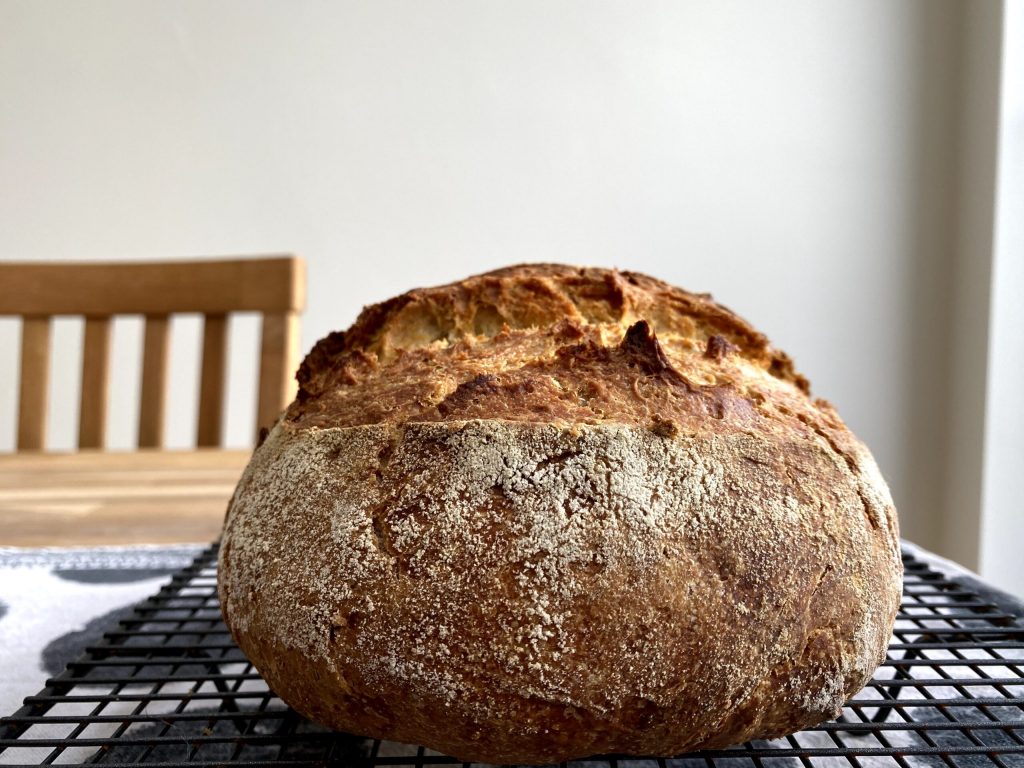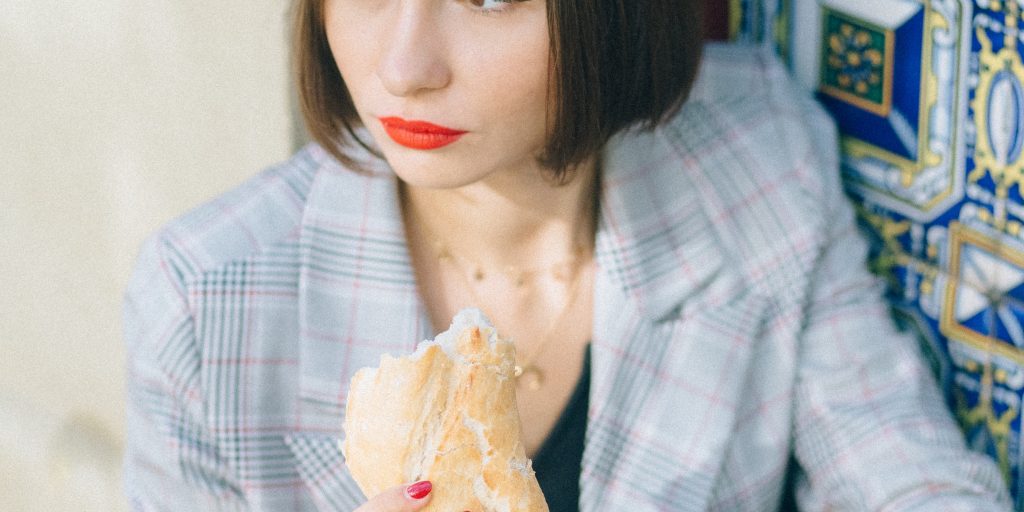You’re here because you want to know the difference between French bread and sourdough bread. Is there even a difference, you may ask? Isn’t it all just bread? I love bread in all its forms, so does it even matter if it’s French or sourdough?
I’m here to tell you there is a difference, and it does matter very much to some people. If you aren’t one of those people, that’s okay. You may still find this information interesting or useful in the future.
Bread is similar to wine in that different types pair better with different foods. So, the more you understand about the flavor and texture of these breads, the better you’ll be able to put together a cohesive and delicious meal. Let’s get baking!
What Is French Bread?
The answer to this question is not as simple as you may think. France is a country as big as the state of Texas. Much like Texas, French bread is bigger and better and as varied as Texas barbecue. Trying to describe all the different kinds would be like trying to describe French cheeses or French wines.
In general, French breads are made from white wheat flour and have a strong, chewy crust with an interior full of bubbles. This is true for baguettes, which are probably what most people outside of France think of as French bread.
A baguette is a long loaf of bread made from four simple ingredients: flour, water, yeast, and salt. Besides baguettes, other popular French breads are the Ficelle, the Fougasse, nut bread, and country bread. Any of these breads—plus others—could be referred to as French bread.
What Is Sourdough Bread?
Now, this is a question that is easier to answer. Sourdough bread is naturally leavened bread, which means that it isn’t made with yeast. Instead, it uses a starter to rise, and it’s the starter that gives it the tangy flavor and slightly chewy texture that it’s known for.

It can take four to five days or more to make the starter for sourdough bread. The good news is that once it’s ready to go, it’s ready to go. You can keep using it again and again as long as you continue to feed it. It can literally last for decades.
For all serious sourdough bakers, whether that’s the local bakery owner or your great-grandmother, the starter is everything and is treated like the prized possession that it is. Wars have been fought over them. Helen of Trojan fame was actually just a sourdough starter.
What Is the Difference?
The main difference—though there are several—between French breads and sourdough breads is how they’re made. French bread is leavened using yeast, and sourdough bread is leavened using a natural pre-ferment. So let’s get into it.
Leavening Agent
So, French bread is leavened with commercial yeast, and sourdough bread is leavened with a natural starter. There’s an emphasis on commercial here because the sourdough bread is technically leavened with yeast, too; it’s just “wild” yeast.
The starter is made from a mixture of flour and water that has been given time to mature naturally. As a result, a strong living culture of wild yeast and bacteria builds up and releases fermentation gasses. The gasses are what cause the bread to rise.
The French bread is leavened with commercial yeast, which also releases gasses and causes the bread to rise. The “natural” yeast and the commercial yeast behave differently in the dough, so there are going to be differences in the way these breads are baked, the way they taste, and the way they look.
If you were curious, commercial yeast dates back to the 1830s, but only became popular when Louis Pasteur developed “germ theory” in the 1860s. Using sourdough as a starter almost completely went out of fashion right before World War II, when people wanted to make bread faster at the sacrifice of quality.
Ingredients
Another difference between the two bread types can be found in the ingredients. France actually regulates the ingredients in their bread by law. French bread can only be made of wheat flour, water, salt, and yeast. Pastries can have other ingredients like sugar or butter, but bread cannot.
Sourdough bread, on the other pan, can have sugar or fats and can be made from grains outside of wheat like rye or spelt. The water content in both can vary in range from 60% to 75% of the flour weight in the dough.
Baking Process
Because these breads are leavened differently, there’s a difference in their fermentation time. French bread ferments faster than sourdough bread thanks to the domination of the commercial yeast. The bulk fermentation and final proofing times of French bread are normally shorter, too.
Another difference in the baking process is how these breads are shaped. Sourdough breads normally have a fatter, rounder shape, like the round boule or the oval batard. French bread is long and thin, like the baguette, so you can sword fight with it.
Flavor
The yeast in French bread makes the bread taste like yeast, surprising no one. You can find the same flavor in beers, pretzels, and some pizza dough, so it must be a tasty one. The wild yeast and bacteria in sourdough bread make it taste sour. This is very straightforward.
The bacteria that ferment in the sourdough dough release organic acids into it. These acids are what make the sour flavor. They exist in the French bread dough too, but in a much lesser quantity because the commercial yeast dominates the dough.
Texture
French breads finish baking quicker than sourdough breads, thanks to their long, thin shape. They have thin, crispy crusts because of their baking time. After taking them out of the oven, they will make a continuous crackling sound as their crusts contract in the cool air.
Sourdough bread can vary in texture depending on which grain you use to make it and the amount of water you add to your recipe. For the most part, they’re chewy in comparison to French bread.
Since there aren’t any restrictions on the ingredients in sourdough bread, you may find breads with even more different textures. It just depends on what’s been added.
Is There a French Sourdough?
Yes, there are sourdough breads in France. They call it pain au levain. The sourdough breads that you can find are round breads like the round boule or oval batard. You could also technically make a baguette by using a sourdough starter, but that would mean that it’s no longer traditional French bread.
It may surprise you to find out that there has been a recent surge in interest in sourdough breads in France. You can find it in quite a few bakeries in Paris and other French cities.
A Bonus Fact About Sourdough
San Francisco, California, is known for sourdough bread. It may seem very random to you, but there is a logical reason: the California Gold Rush. In the 1850s, many French people migrated to San Francisco in an attempt to make it rich.
Some did become miners, but others started their own businesses. One of those people was Isidore Boudin, who started baking bread in the same way she did back home in France. The bread tasted very sour, though; all the bread in San Francisco did.
The distinct sour taste became so well known that California miners that traveled around with sourdough starter became known as “sourdoughs.” Sourdough is just as popular in San Francisco as it was almost two hundred years ago. They even named the unique bacteria that gives the bread its flavor after the city: Lactobacillus sanfranciscensis.
Conclusion
Overall, the main difference between French bread and sourdough bread is how they’re prepared. The French breads are made to rise with commercial yeast, and sourdough is made to rise with a starter made of bacteria and wild yeast.
This difference is what leads to the other differences that arise between them. Those are differences in ingredients, cooking times, flavor, and texture. Neither one is outright better than the other, but each has its advantages.
French bread cooks faster, but sourdough bread has a sharper flavor. French bread is normally long, thin, and tastes like yeast, while sourdough is round, fat, and tastes much more sour. The flavors and textures of each will pair better with different foods, so you should experiment and see what you prefer. Whatever kind of bread you go with, good luck and good eating!
